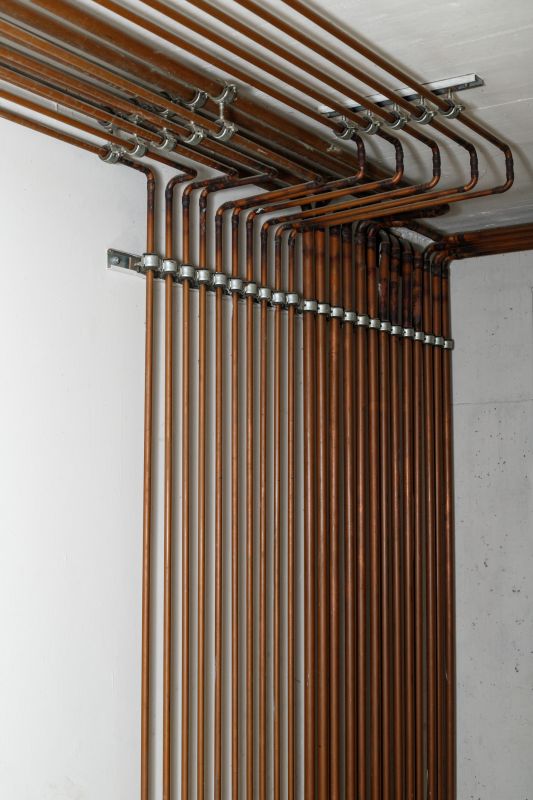Favorite Copper Piping Supplies For Reliable Plumbing Systems
Explore trusted materials and tools that ensure long-lasting and leak-free copper piping installations for any project size.
 Copper piping installations are a fundamental component in plumbing systems, known for their durability and reliable performance. When selecting products for copper piping, it's important to consider the specific needs of the project, including pipe size, connection types, and compatibility with other materials. Copper pipes are favored for their corrosion resistance and ability to withstand high temperatures, making them suitable for both residential and commercial applications.
Copper piping installations are a fundamental component in plumbing systems, known for their durability and reliable performance. When selecting products for copper piping, it's important to consider the specific needs of the project, including pipe size, connection types, and compatibility with other materials. Copper pipes are favored for their corrosion resistance and ability to withstand high temperatures, making them suitable for both residential and commercial applications.
Top Overall Option
Copper Pipe Fitting Kit
A comprehensive copper pipe fitting kit provides a versatile selection of connectors, elbows, couplings, and adapters, suitable for various installation needs. These kits typically include high-quality, durable fittings designed for secure soldered or compression connections, making them a reliable choice for both professional plumbers and DIY enthusiasts. Their all-in-one nature simplifies the procurement process and ensures compatibility across different project requirements.
Types of Products For Copper Piping Installations
Solder Fittings
Used for creating permanent, leak-proof connections through soldering, these fittings include couplings, elbows, and tees designed specifically for copper pipes.
Compression Fittings
Allow for easy, tool-assisted connections that can be disassembled if needed, ideal for maintenance or temporary setups.
Push-to-Connect Fittings
Provide quick and tool-free installation options, making them suitable for DIY projects and areas with limited access.
Pipe Cutters
Specialized tools designed to make clean, precise cuts in copper pipes, essential for proper fitting and sealing.
Deburring Tools
Used to smooth rough edges after cutting, ensuring better fit and reducing the risk of leaks.
Expansion Tools
Facilitate the expansion of copper pipes for certain connection types, especially in refrigeration or HVAC applications.
Flare Fittings
Create flared ends on copper pipes for secure, leak-resistant connections, often used in refrigeration systems.
Crimping Tools
Used with compression or push-to-connect fittings to ensure tight, secure joints.
Adapters and Couplings
Connect copper pipes to other materials or different sizes, ensuring system versatility.
Pipe Insulation
Protects copper pipes from heat loss and condensation, enhancing system efficiency.
Support Clamps and Hangers
Secure pipes in place, preventing movement and reducing stress on joints.
Threaded Fittings
Allow for threaded connections in copper piping systems, often used in specialized applications.
Expansion Joints
Accommodate thermal expansion and contraction in copper piping systems, reducing stress.
Popular Choices
A variety of fittings including elbows, tees, and couplings, suitable for multiple connection types.
Complete kits with solder, flux, and necessary tools for creating durable joints.
Pre-packaged sets of compression fittings for quick installation and repairs.
Assorted push fittings for fast, tool-free connections in copper piping.
Tools designed to streamline pipe preparation for installation projects.
Flexible insulation options for protecting copper pipes from temperature fluctuations.
Connect copper pipes with threaded ends for secure, detachable joints.
Accommodate movement and thermal expansion in piping systems.
Ensure stable pipe positioning during installation and operation.
Specialized fittings for refrigeration and HVAC applications involving copper pipes.
A wide variety of accessories and fittings are available to ensure secure and leak-proof connections. These include solder fittings, compression fittings, and push-to-connect options, each designed to facilitate different installation methods. Proper tools such as pipe cutters, deburring tools, and fitting wrenches are essential for achieving clean cuts and secure connections, which contribute to the overall integrity of the plumbing system.
When planning a copper piping project, it is also crucial to consider the quality and specifications of the products used. High-quality fittings and connectors can help prevent leaks, reduce maintenance needs, and extend the lifespan of the plumbing system. Additionally, selecting components that are compatible with existing piping and fixtures can simplify installation and ensure a seamless integration. Whether for new construction or repairs, understanding the different product options and their applications can lead to more efficient and effective plumbing solutions.
Key Buying Considerations
- Identify the correct pipe diameter and wall thickness to match your system requirements.
- Determine whether solder, compression, or push-to-connect fittings are most suitable for your project.
- Ensure compatibility of fittings with the specific type and grade of copper piping used.
- Consider the ease of installation and whether specialized tools are required.
- Verify the quality and corrosion resistance of fittings to ensure longevity.
- Assess the environmental conditions where the piping will be installed, such as exposure to moisture or temperature extremes.
- Look for fittings that meet relevant industry standards and certifications for safety and performance.
- Evaluate the availability of replacement parts and accessories for future maintenance.
- Consider the overall cost, including tools and accessories needed for installation.
- Plan for proper pipe support and protection to prevent movement and damage over time.
- Check if the fittings are suitable for the type of connection (soldered, threaded, crimped, etc.) you prefer.
- Determine the maximum pressure and temperature ratings to ensure system safety.
- Assess whether quick-connect options could save time during installation.
- Review user feedback and product ratings to gauge reliability and ease of use.
- Consider whether the products are compatible with other materials in your plumbing system.
This content contains affiliate links. We may earn a commission if you purchase through these links, at no additional cost to you.
